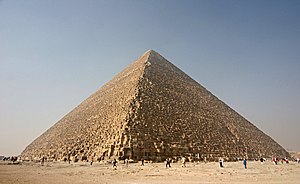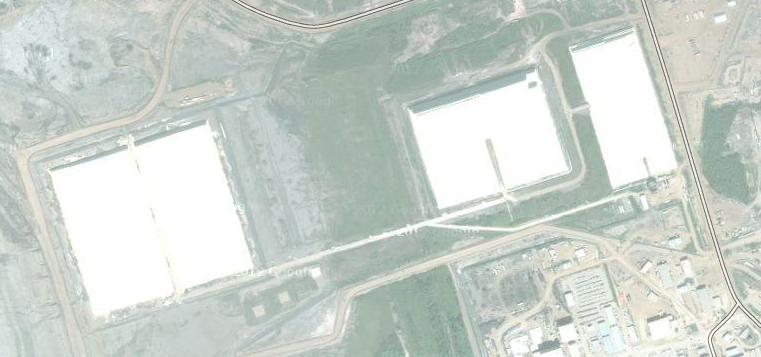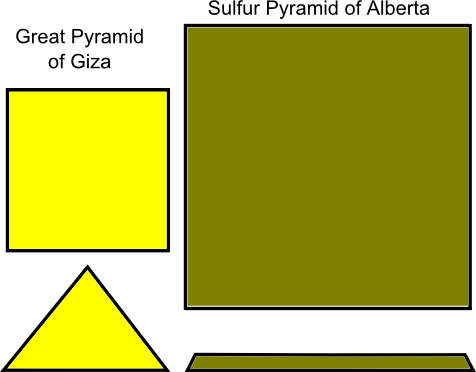
Pharaoh Khufu must be rolling in his monumental grave. Since its construction in 2560 BC, the Great Pyramid of Giza stood as the largest man-made pyramid ever built*. For 3800 years, it held the title of the tallest man-made structure of any kind. It wasn’t until the Industrial Revolution that our buildings began dwarfing this wonder of the ancient world. Even still, the Great Pyramid is massive, with a volume of 2,580,000 cubic meters. But there is another pyramid, more massive than Giza, and it wasn’t built to entomb a mighty king. It’s not a monument of any kind. The largest (by volume) pyramid in the world resides in Alberta, Canada and it’s made entirely of sulfur.
Wait, what?
Alberta is home to two major oil companies, Syncrude and Suncor, who rule the Alberta oil sands from Fort McMurray. Oil sands are petroleum deposits rich in bitumin, a tar like substance, that can be processed into bituminous oil. Alberta is the world’s leading producer of bituminous oil. Among the byproducts of bitumin mining is sulfur. Unfortunately, sulfur is produced in such massive quantities that the refining process has completely tanked the market for it. With nowhere for the sulfur to go, at least one company, Syncrude, has developed a truly novel solution–build pyramids.
Technically, they’re ziggurats, for now. These structure are built from blocks of liquid elemental sulfur that are poured and solidified. The image below shows three of the great pyramids of Alberta–and yes the Google satellite images are washed out around the tar sands facilities (see for yourself).

So how do they stack up against other legendary pyramids? According to the recently published Visit Sunny Chernobyl, an excellent book about pollution tourism, the largest of these pyramids has a quarter-mile long base and stands almost 60 feet tall. Here, for scale, is the largest sulfur pyramid compared against Khufu’s tomb:

So the sulfur pyramid is shorter, with a much bigger base. How does its volume compare to that of the Great Pyramid? The Great Pyramid is 2,580,000 cubic meters. The Sulfur Pyramid of Alberta? 2,840,000** cubic meters and still growing! One expert suggests that at the current rate, the total area needed for sulfur storage in Alberta in the next hundred years will be 150 square kilometers of 50 foot stacks. That’s 405,000,000,000*** cubic meters, which means, if built as a single structure, the sulfur stacks are on track to become the most massive man-made structure, ever.
The Sulfur Pyramids of Alberta are quite possibly the greatest wonder of the industrial world.
*A reasonable argument could be made for The Great Pyramid of Cholula as largest. Cholula is a massive complex of successive structure, built by several groups over 600 years. When accounting for the base of the main pyramid structure, rather than the entire complex, Cholula tops out at a very respectable 1,800,000 cubic meters. The total volume of the complex is approximately 4,450,000 cubic meters, making Cholula the largest monument in the world.
**Based on photographs of these mounds (see here, here, and here), the sides range from shear to slightly sloped, so I am using an estimated angle of 15 degrees for the side. If anyone has more accurate measurements (perhaps a Syncrude rep would like to chime in), I would greatly appreciate that information.
***Assuming the walls are all shear.
